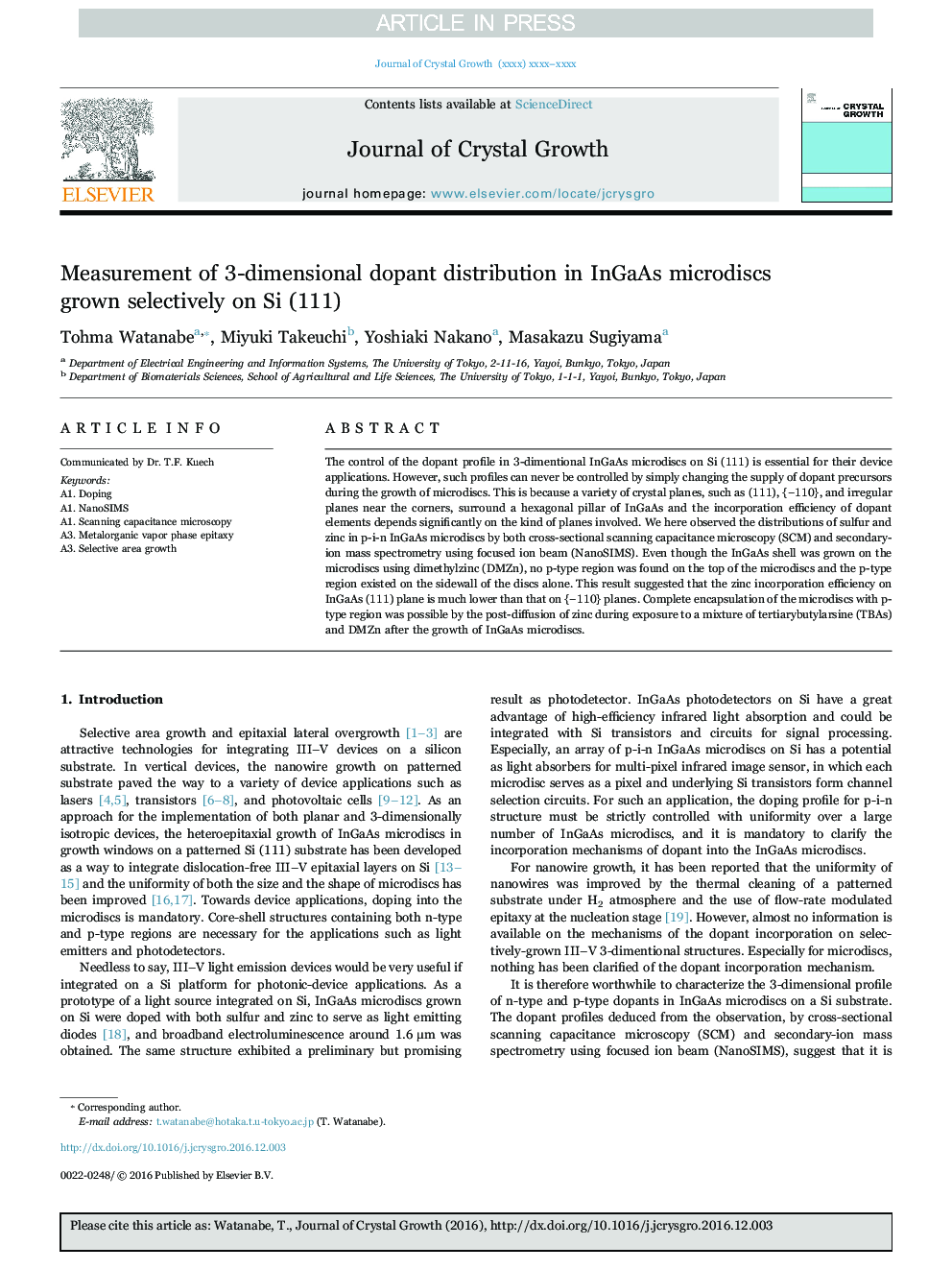| Article ID | Journal | Published Year | Pages | File Type |
|---|---|---|---|---|
| 5489434 | Journal of Crystal Growth | 2017 | 6 Pages |
Abstract
The control of the dopant profile in 3-dimentional InGaAs microdiscs on Si (111) is essential for their device applications. However, such profiles can never be controlled by simply changing the supply of dopant precursors during the growth of microdiscs. This is because a variety of crystal planes, such as (111), {â110}, and irregular planes near the corners, surround a hexagonal pillar of InGaAs and the incorporation efficiency of dopant elements depends significantly on the kind of planes involved. We here observed the distributions of sulfur and zinc in p-i-n InGaAs microdiscs by both cross-sectional scanning capacitance microscopy (SCM) and secondary-ion mass spectrometry using focused ion beam (NanoSIMS). Even though the InGaAs shell was grown on the microdiscs using dimethylzinc (DMZn), no p-type region was found on the top of the microdiscs and the p-type region existed on the sidewall of the discs alone. This result suggested that the zinc incorporation efficiency on InGaAs (111) plane is much lower than that on {â110} planes. Complete encapsulation of the microdiscs with p-type region was possible by the post-diffusion of zinc during exposure to a mixture of tertiarybutylarsine (TBAs) and DMZn after the growth of InGaAs microdiscs.
Related Topics
Physical Sciences and Engineering
Physics and Astronomy
Condensed Matter Physics
Authors
Tohma Watanabe, Miyuki Takeuchi, Yoshiaki Nakano, Masakazu Sugiyama,
